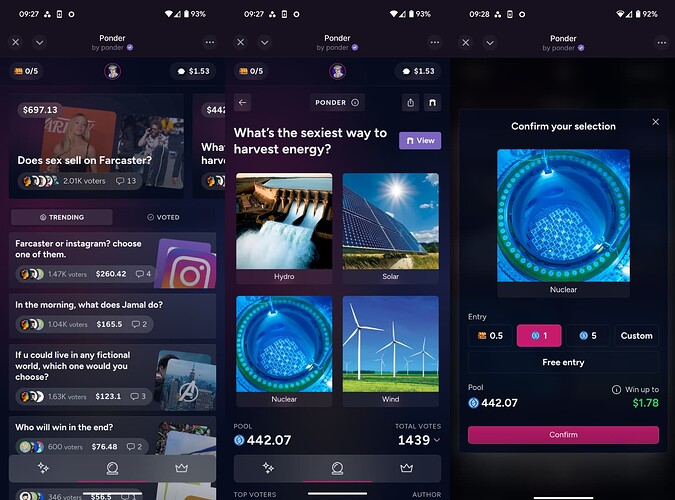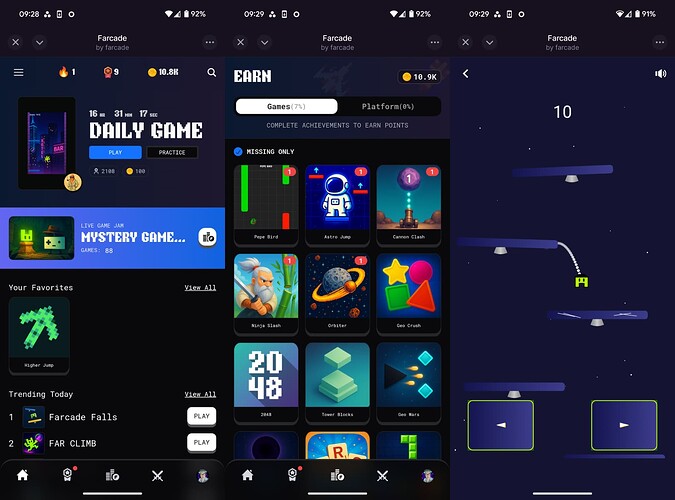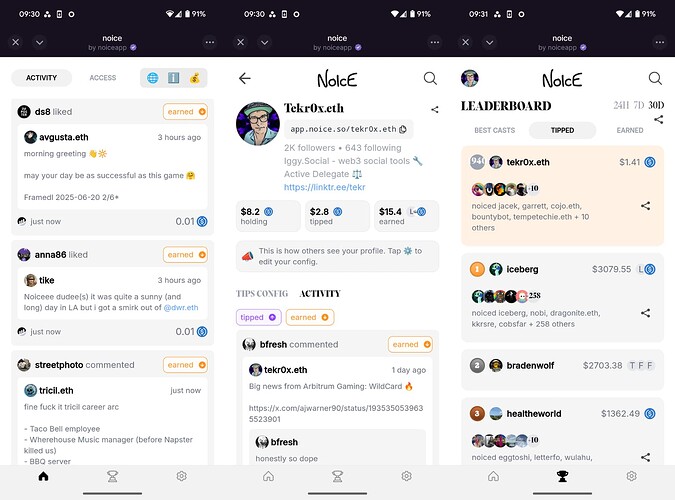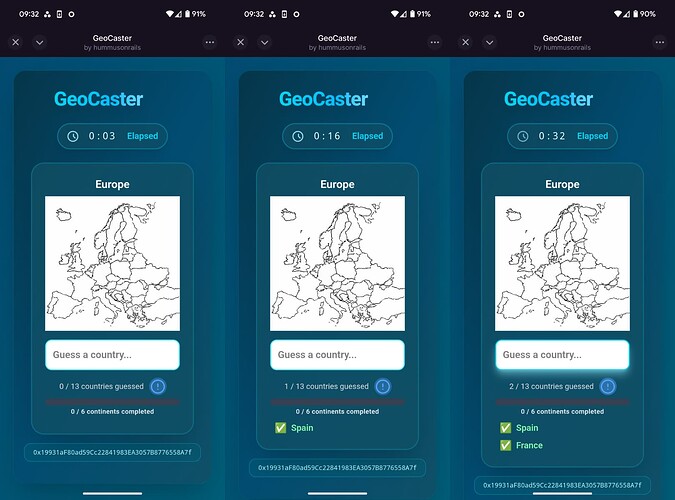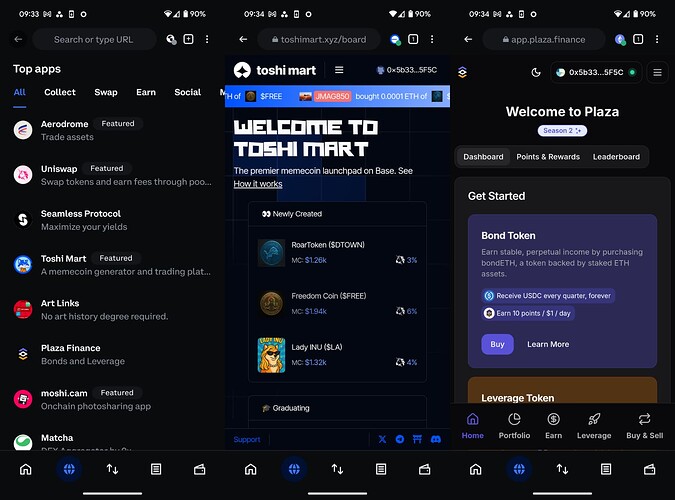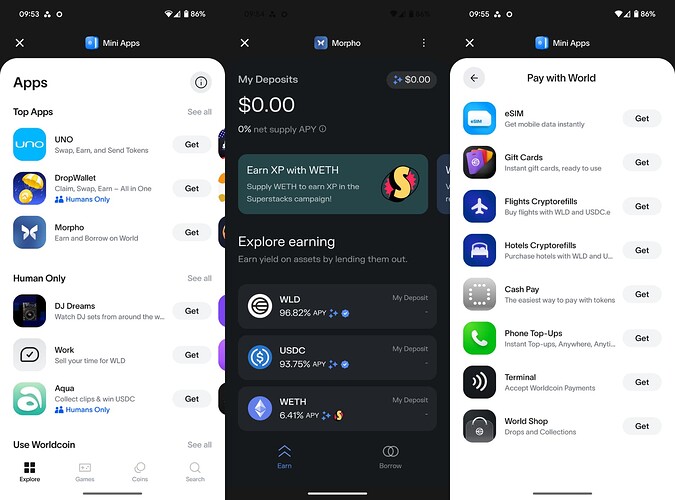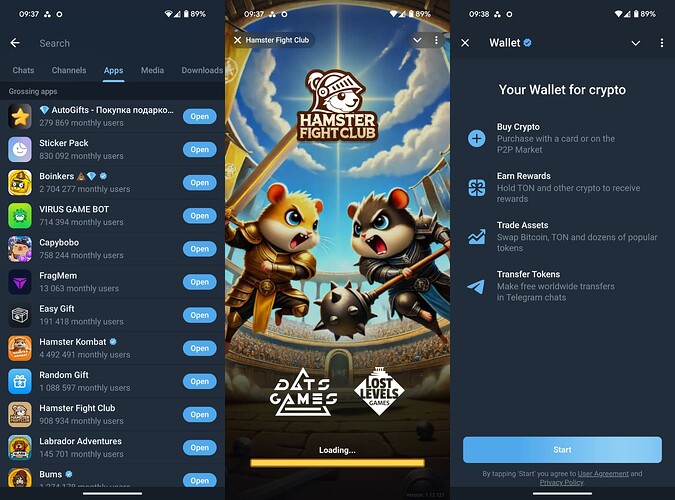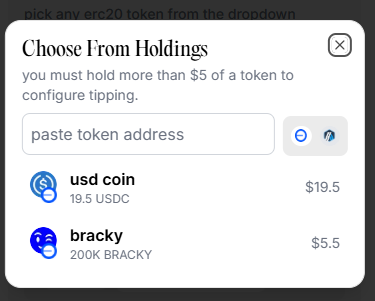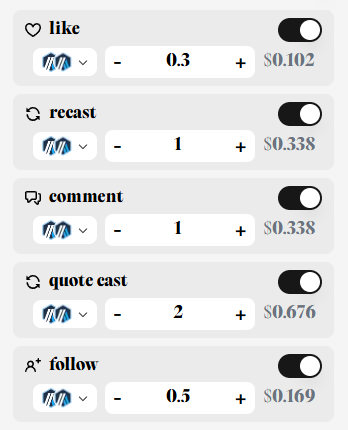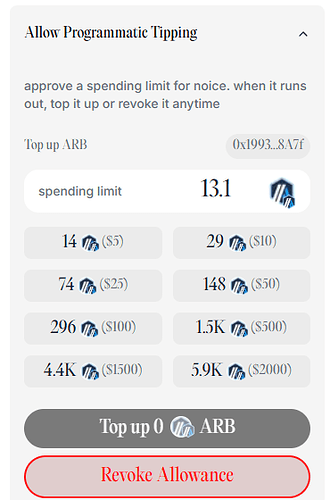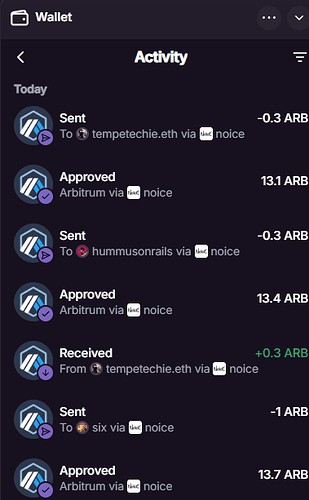I’ve never been to China, but a friend of mine has. When he got back a month ago, we met up for a drink and he told me all about it.
What stood out most was how central WeChat is to everyday life there.
Paying for groceries? WeChat. Ordering a cab? WeChat. Getting food delivered? Also WeChat.
Everything happens in one app. Fast, easy, and seamless.

It made me think about crypto and our goal of bringing millions of users onchain. Where are we now, and how far do we still have to go?
The recent momentum around Mini Apps got me thinking about this again. So here’s a short guide to what Mini Apps are, and why they matter, especially for us at Arbitrum.
What are Mini Apps
Mini Apps aren’t exactly a new concept. What is changing is how builders are starting to think about what’s possible with them. Lately, there’s been a kind of Mini App renaissance. That’s thanks to stronger distribution channels (like Farcaster, World App, and Telegram) plus improvements like account abstraction, seamless bridging, and ultra-cheap microtransactions. Basically, a dream setup for anyone building consumer apps.
Many social platforms have caught on to the idea of letting developers launch Mini Apps through embedded app stores. Since users are already on these social apps, it makes access incredibly easy. What really sets things apart, though, are the built-in wallets. No more wallet popups or endless confirmations.
Today, using a Mini App can feel as smooth as a Web2 experience.
Examples of Mini Apps on various platforms
1. Farcaster Mini Apps (aka Frames 2.0)
Mini Apps are lightweight, native-like web apps that live inside the Farcaster ecosystem.
They let developers create social, onchain experiences with minimal friction and quick turnaround times. This new interaction model lowers the barrier to entry and opens up fresh ways to keep users engaged (and monetize).
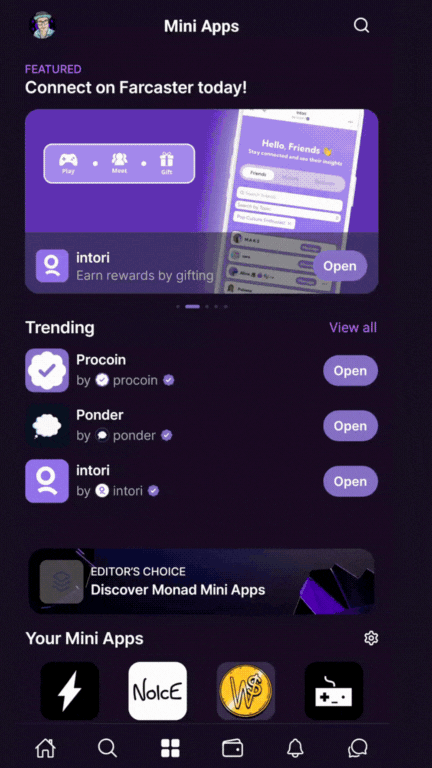
Fast to Build, Fast to Launch: Developers can go from idea to live app in just a few hours, no app store approval needed. Mini Apps use familiar web tech like HTML, CSS, and JavaScript, plus SDKs that help them feel just like native apps.
Easy to Discover: Mini Apps show up directly in users’ social feeds, making them easy to find and use with one click. They also benefit from built-in viral loops and emerging Mini App stores inside Farcaster, helping them grow organically.
Better Retention and Re-engagement: Push notifications and persistent access features help bring users back when there’s something new. Users can also bookmark their favorite Mini Apps to return anytime, which boosts long-term engagement.
Seamless Onchain Actions: Thanks to built-in Ethereum wallet support, users can send tokens, mint NFTs, or donate with a single click. No popups, no extra logins, no extensions.
Native Identity and Personalization: Farcaster handles identity and login, so developers don’t need to build sign-in flows. They can also tap into Farcaster’s social graph to create personalized experiences based on user activity and connections.
Ponder
A question-and-answer Mini App where users can bet on which answer will win the most votes. It turns casual conversations into interactive prediction markets-right in the Farcaster feed.
Farcade
A fun, lightweight gaming app you can launch directly in your feed. Play, compete, and share your scores with others. Shoutout to Hyve Labs (backed by the Arbitrum Grants Program) for also launching a Mini App. Check it out here: https://farcaster.xyz/hyve-labs/0xf4ff09a9
Noice
A clever Mini App that lets users set tipping rules in any ERC-20 token. Like a cast, tip a creator. It’s a great example of how simple and powerful microtransactions can be.
GeoCaster
Built by Ben from the OCL team, this is a geo-guessing game where you test your map skills-and mint a proof-of-completion NFT on Arbitrum when you’re done. Try it here: https://farcaster.xyz/hummusonrails/0x985ebdf3
If you’re curious about building Mini Apps, there’s a small private group of Arbitrum devs (some from OCL, some independent) chatting about it regularly. DM me on Farcaster if you’d like to join: https://farcaster.xyz/tekr0x.eth
2. Coinbase Wallet Mini Apps
Another exciting Mini App distribution channel to keep an eye on is Coinbase Wallet. While it’s no surprise that most of the focus is on Base, it’s still worth tracking their progress-especially given Coinbase’s reach.
Recently, Coinbase Wallet announced plans to integrate a DEX on Base directly into the wallet - big move toward decentralizing app access. And much of this will be powered by Mini Apps. Here’s the announcement: https://x.com/coinbase/status/1933274988041080859
If you’re curious about how Mini Apps are evolving on Base, check out this excellent guide by David Tso: https://www.dtso.org/web3/mini-apps-guide
3. World App
Another unique Mini App distribution channel is World App-mainly because of its user base. Thanks to its unique verification system, it’s much harder to game compared to other platforms. That means fewer bots, less farming, and a more authentic user base- something Mini App developers pay attention to. Also, World App has a much stronger push towards daily life apps (but you pay for them in crypto).
World App also does a solid job with developer support. Their tutorials and docs are well put together. Here’s a quick video guide to get started: https://www.youtube.com/watch?v=QJ0htHP6lb0
And here’s the full documentation for Mini Apps on World App: https://docs.world.org/mini-apps
4. Telegram & TON Network
In the crypto world, Telegram has taken the lead with its own version of Mini Apps, often powered by bots integrated directly into the app. The concept has been around for over a year now, and we’ve already seen some big hits—like Hamster Kombat (yes, the one where people were endlessly tapping their screens for free tokens).
Telegram was (as far as I know) the first to launch blockchain-powered Mini Apps, supported by its native TON network: https://ton.org/en/mini-apps
If you’re interested in building on TON, the documentation is pretty extensive. This guide by Thirdweb is a great starting point: The complete guide to Telegram Mini Apps on TON Blockchain: Benefits, Use Cases, and Apps
Why Mini Apps Matter to Arbitrum
With Mini Apps onchain user experiences become not just possible, but practical. And this brings us to crypto’s biggest challenge: real-world use cases and meaningful adoption. Mini Apps are well-positioned to help solve this. They’re simple, fast, and user-friendly. The blockchain stays in the background. Most users won’t even realize they’re interacting with it.
This is where Arbitrum comes in. With over $14B in total value locked and a highly decentralized network, Arbitrum is already a leader. But we can-and should-play a bigger role in the next wave of user onboarding. Mini Apps present a twofold opportunity for Arbitrum:
Bring new users and TVL onchain: By making onboarding easy, Mini Apps can attract more users and capital to the Arbitrum ecosystem.
Increase usage and revenue: For users already on Arbitrum, Mini Apps offer new ways to engage with the chain, driving more transactions and increasing sequencer revenue for the Arbitrum DAO.
Recommendations for Arbitrum
Proactive approach: The Arbitrum team (like Hunter and others) has recently taken a more active role on Farcaster, which has noticeably boosted awareness. For example, activity in the /arbitrum channel has grown significantly. The team also helped add native Arbitrum chain support inside the Farcaster wallet just a few weeks ago. How could we all get more Arbitrum builders more proactive in these channels?
Include Mini Apps in existing grant programs: Programs like Questbook D.A.O. grants could promote Mini Apps by directing developers to relevant channels. This might fit well within the scope of Arbitrum New Protocols and Ideas 3.0. A small campaign could be launched to promote our grant program between mini app devs on this channel:
https://farcaster.xyz/~/channel/miniapps
Incentives for existing builders: How can we encourage Arbitrum native projects like Camelot or others to adopt Mini Apps as a new distribution channel? Not the same interface, but by using Camelot’s technology to create new interfaces that engage users, like participating in Earn programs through Mini Apps. One click to earn yield.
Retroactive programs from OCL: In the past, there were initiatives like retroactive Frame grants. It might be worth trying retroactive grants or similar incentives again to support Mini App development?
Open dialogue: Organizing hackathons, talks, workshops, or discussions among Arbitrum stakeholders can help generate more ideas and build momentum. The more we talk about it, the more opportunities we’ll uncover.
Conclusion
It’s easy to brush off Mini Apps as just another phase or hype. Some can say, “We see these trends come and go”.
But what I see is that all this experimentation is actually helping us find better ways to onboard new users. And that’s the real game-changer. Trends like this are what will bring more people onchain, and Arbitrum should be right in the middle of it.
This post is a call to action for developers, DAO members, and ecosystem partners to get involved and stay proactive. A good place to start? Simply try out a Mini App and share your experience in the comments below.
